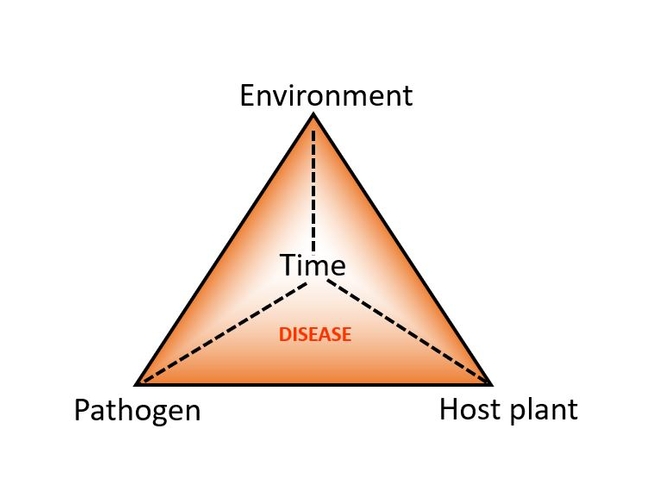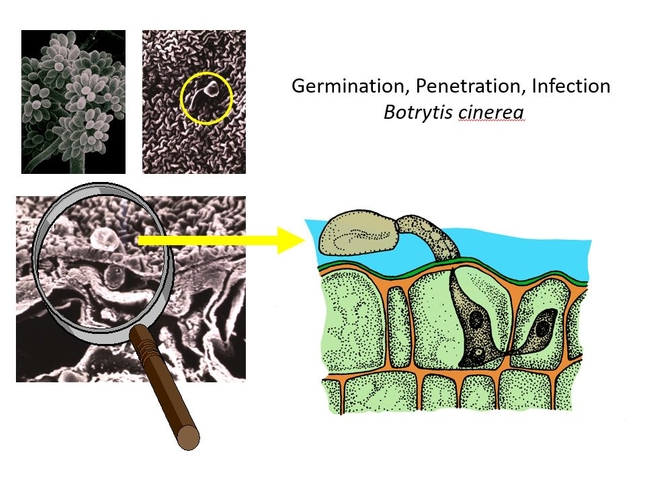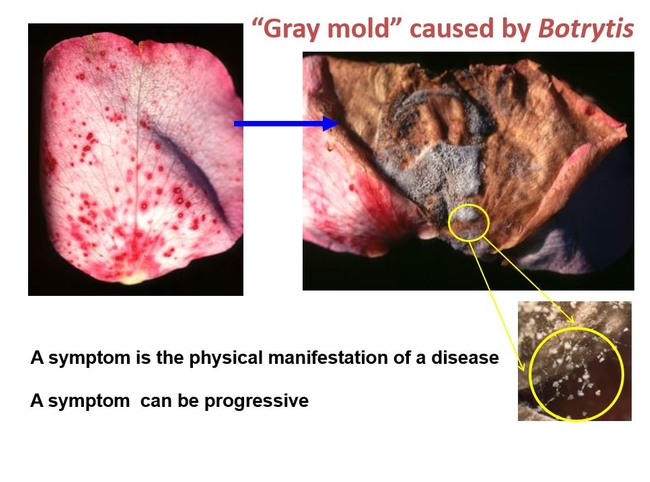The disease triangle is a fundamental principle illustrating the factors involved in the occurrence and severity of plant disease. Disease caused by a living agent requires the interaction of a susceptible host, a virulent pathogen, all in the context of a favorable environment. Plant disease is prevented when any one of these three components are eliminated. The three factors can be manipulated to reduce the risk of disease development (See previous blog).
Some plant pathologists have expanded the usefulness of the disease triangle concept by adding one or more factors such as “human activity” or “vectors” to represent special-case applications. Another useful factor is “time” and it can be represented by one of the vertices of a three-dimensional pyramid (here with the top of the pyramid pointing out at you).
The dimension of time can convey that disease occurrence and intensity are affected by the duration that the three primary factors are aligned. Disease may not occur instantly once the three parameters are favorably aligned but will occur after some time.
For example, the initiation of gray mold disease on rose petals (caused by Botrytis cinerea) can occur in just 4 to 6 hours. With free moisture on rose petals and cool temperatures, Botrytis spores germinate, penetrate the petal's surface, and its hyphae infect and develop within the plants cells.
Figure to the left: Botrytis spores formed in clusters (upper left), germinate (upper center) and penetrate the petal's surface , and its hyphae infect and develop within the plants cells (lower two figures).
The physical manifestation of gray mold is first seen as pinpoint-like lesions surrounded by a reddish border. In very favorable conditions, the hyphae develop quickly through the petal and abundant spores are formed on the surface in a distinctive gray mat in about 24 hours.
Figure to the left: Once infection is initiated, symptoms begin to manifest themselves. Gray mold on rose petals is first seen as pinpoint lesions with reddish borders (left), but later the lesions coalesce and form a gray mat composed of thousands of spores (right and close up below).
Gray mold diseases exhibit symptoms relatively quickly after initiation of Botrytis infection. Other diseases such as those caused by Phytophthora cinnamomi may take much longer. A young avocado tree, may take up to a year to exhibit symptoms after its roots are infected. An older avocado tree may take several years to exhibit symptoms.
This time lag or latency of disease expression leads to many diseased nursery stock plants to be inadvertently sold and moved in the nursery trade. An infamous example of this was in 2004 when hundreds of infected, but symptomless, camellia plants were inadvertently shipped with Sudden Oak Death (caused by Phytophthora ramorum) from a southern California nursery to many parts of the United States and Canada.
Management factors such as fungicide applications are influenced by the time factor. Most fungicides are preventative, they should be applied before infection occurs. But some other fungicides have the ability to slow or stop infection and/or sporulation. The urgency of application will depend on the disease and the fungicide tools available to control it.
Next: Using the disease triangle in plant disease diagnosis


